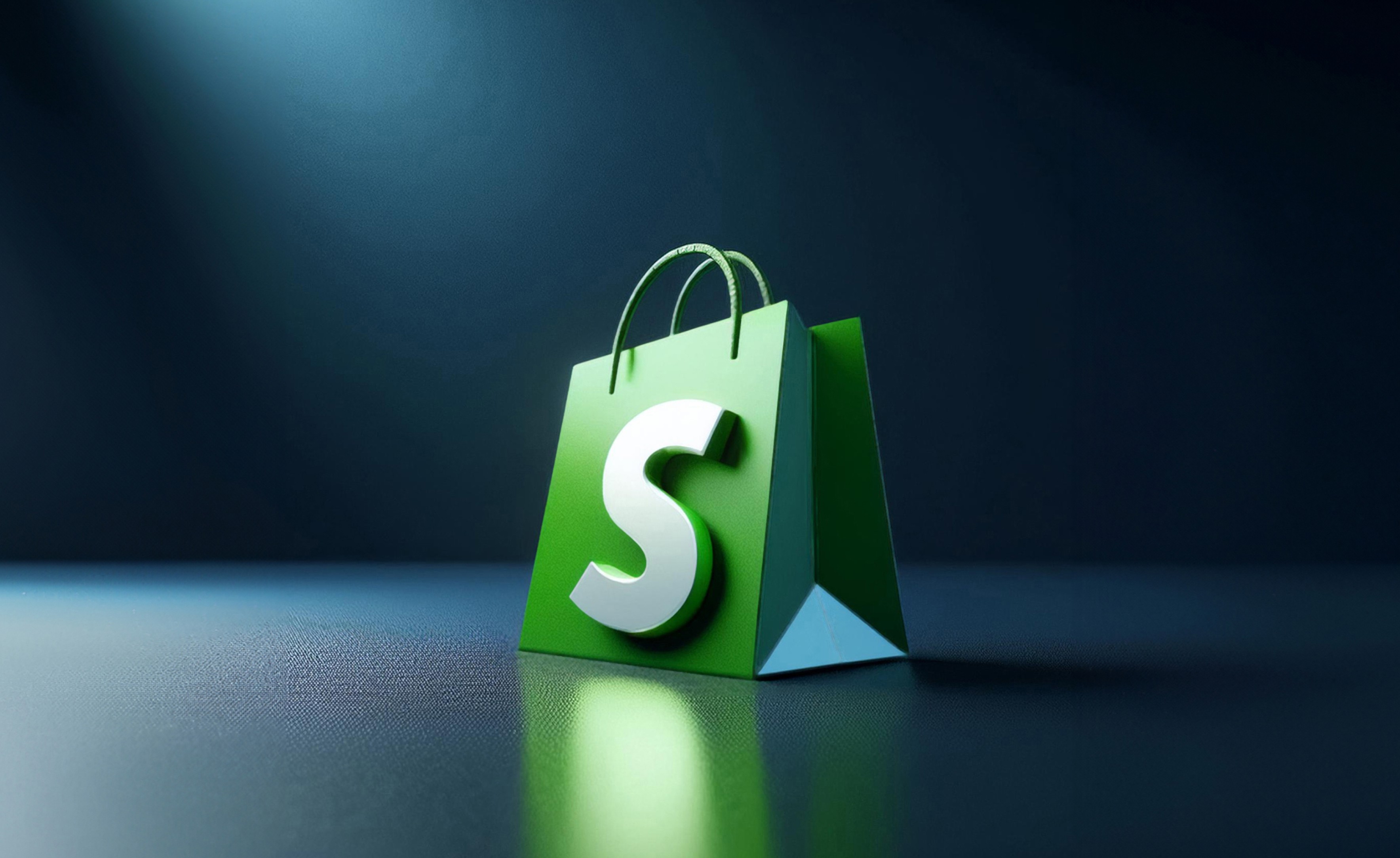What Is Shopify and How Does It Work? Everything You Need to Know

Shopify turns the dream of running a business into a reality without investing in brick-and-mortar stores. With Shopify, you run stores online while ensuring high sales potential. It has, on average, 2.1 million daily users.
Starting an online Shopify store is easier since it includes features for all, encompassing e-commerce specialists and beginners. Through the automation of CRM, transactions, inventory, and more, Shopify helps you reduce operational costs.
Over the past few years, more brands have transitioned to Shopify, impacting the e-commerce market. From local storefronts turning online to managing international shopping, Shopify has become a lifesaver for small and large business owners, serving everyday e-commerce requirements.
This article will explain everything you need to know about Shopify, how it works, its core features, and the benefits of starting an online store with Shopify, in detail.
What is Shopify?
Being an e-commerce platform that lets you sell online, Shopify offers retailers, entrepreneurs, and global brands the ability to run stores, manage sales, and grow business. As a completely hosted cloud-based e-commerce platform focused on small businesses, DTC operations, and SMEs, they help businesses build their website and sell products.
It provides an ‘all-in-one’ e-business starter package that lets everyone start selling online easily with superior security. In the first half of 2023, Shopify began releasing features with a key focus on enterprise operations. More than 15,000 brands across the globe use its enterprise solution, Shopify Plus, for business operations.
It doesn’t need software installation or hosting service; Shopify covers everything required to make the online store successful. In technical terms, it is a subscription-specific SaaS (Software as a Service) e-commerce platform. It provides four store subscription plans and the subscription fees start at $29/month.
How does Shopify Work?
Shopify centralises product-specific information, operational tasks, and customers in a unified system, seamlessly integrating with all sales channels. Once these mandates are in place, Shopify can easily explore and expand into new sales channels and product lines.
Let’s delve into the step-by-step process of how Shopify works from the initial setup to sales management:
1. Sign up for a free Shopify trial
Test Shopify risk-free for 3 days, followed by one month for just $1.
2. Connect initial sales channels
Connect the initial sales channels using the account setup wizard, which you can further modify and expand as required. If you wish to sell via your social media accounts, connect them in the setup wizard.
3. Enter the product data or find items for sales
Give the item details, pricing, and product images, or move into the Shopify Handshake wholesale network to connect with US dropshipping suppliers, enabling you to find items to sell.
Different sellers combine the products they source or make with specific drop-ship products to offer an all-around collection.
4. Set up Shopify payments
You can start directly accepting payments or connect your payment processor to the dashboard with one click to activate the Shopify payments. Shopify supports over 100 external payment processors. While choosing an external payment processor for your Shopify store, you should review and compare leading credit card processing companies.
5. Set up shipping and applicable tax information
You may set up the shipping methods, fees, and applicable sales tax information from the ‘settings’ tab. It also provides automatic tax calculations based on the regions; otherwise, you can manually adjust them.
You’re now all set to start selling while building the Shopify store. Implement steps 1 to 5 to begin sales on various social media and marketplace channels by adding them as sales channels and on external websites with the Buy Button tool. You can also sell in person using a POS card reader.
6. Set up Shopify online store
Go for the Shopify online store setup to sell via your branded website. Shopify makes this easier with plug-and-play themes that demand some setup and added content to make it your own. You can build professional and personalised online storefronts with highly usable creation tools, various design options, and a flexible theme editor.
7. Process, ship, and track orders
As orders come in, you can manage everything within the Shopify dashboard. Its built-in tools make it easier to set up efficient workflows to manage orders you ship, drop-ship items, and even virtual products such as music downloads and e-books. Shopify emails are useful for automatically sending order status and shipment tracking information to customers. After completing the setup and workflow essentials, you can explore the sales-driving features such as blogging, email marketing, abandoned cart, remarketing, etc.
7 Reasons to Choose Shopify
1. Shopify supports businesses throughout the e-commerce environment.
Shopify augments businesses throughout the e-commerce ecosystem by offering various tools and features to support selling online and in person. It supports a range of products, such as physical, digital, and drop-shipped items. Shopify lets businesses establish, manage, and scale their virtual storefronts. It is a well-known solution for any business that wishes to build an online presence.
2. It supports global commerce.
Shopify supports global commerce, which means it lets you sell to customers worldwide. The e-commerce platform supports currencies, international shipping, and multiple languages, making it effortless to expand the business worldwide.
3. Shopify augments creative expression.
The Shopify platform provides “no code” configurability, enabling merchants to get started quickly. It also offers “max code” access to developers for more control and advanced customisation. It partners with influencers, developers, and businesses to promote the platform. Shopify’s AI-specific commerce tools, such as Shopify Magic and Sidekick, are designed to help entrepreneurs become highly creative and productive. Shopify and Google Cloud have partnered to bring exceptional customer experiences using Generative AI. Shopify also partners with POD (Print-On-Demand) services to let entrepreneurs begin a t-shirt business with the least upfront investment.
4. You can let the brand shine.
You build a recognisable brand image with the brand’s visual elements, such as the logo, typography, and colours. Your store’s homepage is the prime face. Use the sections to include text, images, blog posts, collections, products, or store data. You can define the brand’s personality and voice by creating a brand style guide. You can also customise the automated notifications and social media interactions to imply your brand tone. Shopify email is another feature that lets you send up to 10,000 monthly manual/automated emails for free. Another striking feature is the Shopify free logo maker, which helps navigate different professional logo designs.
5. It is the most integrated e-commerce platform.
You can improve and expand your store's functionality with access to 8000+ apps in the Shopify App Store. Whether you require advanced analytics, marketing tools, or improved inventory management, you have an app for almost everything you need.
6. You can eliminate unnecessary complexity.
Shopify is simple, and that’s why merchants are quite interested in using the platform. It is simple to add products, discounts, and process orders with Shopify. The web design is user-friendly and easy to use, thanks to the drag-and-drop editing tool Shopify offers.
This is why Shopify offers an easy-to-access platform that integrates easily with the tools and channels in a single place. Business owners can eliminate clutter and choose only what they need.
7. Built to scale with your business.
Shopify is designed to grow alongside your business because it lets you add employees, products, and features to the store. It also provides various payment options ranging from PayPal, Apple Pay, and digital wallets. With Shopify, you can get tools to sell online, in-person, via social media or through third-party marketplaces. Shopify offers features such as email marketing, boundless bandwidth, abandoned cart recovery, and SEO (Search Engine Optimisation).
What Is Shopify’s Pricing?
Shopify has five online store plans, each of which supports unlimited customers, orders, and products and offers high-end data security. You also get discounts if you pay in advance—i.e., save 10% for annual payments and 20% for biennial payments.
| Shopify Lite (Monthly) | Basic Shopify(Monthly) | Shopify(Monthly) | Advanced Shopify (Monthly) | |
|---|---|---|---|---|
| Subscription Cost | $9 | $29 | $79 | $299 |
| Credit Card Rates (Online) | 2.9%+30 cents | 2.9%+30 cents | 2.6%+30 cents | 2.4%+30 cents |
| International & AMEX Credit Card Rates (Online) | 3.9%+30 cents | 3.9%+30 cents | 3.6%+30 cents | 3.4%+30 cents |
| Credit Card Rates (In-person) | 2.7% | 2.7% | 2.5% | 2.4% |
| Transaction Fee when not using Shopify Payments | 2.0% | 2.0% | 1.0% | 0.5% |
| Shipping Discount | Upto 77% | Upto 77% | Upto 88% | Upto 88% |
| POS Lite Mobile App | Free | Free | Free | Free |
| POS Pro for Retail Store | $89 per location | $89 per location | $89 per location | $89 per location |
| Shopify Payments | 2.0% | 2.0% | 1.0% | 0.5% |
**The values listed above are subject to change based on the revised pricing**
Basic, Shopify, and Advanced Plans:
Each of these offers omnichannel features to sell anywhere with a complete set of customer, business, and order management features. As you move upward the plan tiers, you require low payment processing fees and high shipping discounts and can avail of advanced marketing, reporting, and management tools.
Shopify Lite: (no longer available to new merchants)
It supports in-person POS sales and includes an online Buy Button tool to support non-Shopify websites, email sales, and blogs. Shopify Lite doesn’t offer the online store, seller marketplace channels, and social media of the other plans. The plan is not available to the new merchants. If a merchant currently on the Shopify Lite plan changes to any other plan; they can’t revert to the Shopify Lite plan anymore.
Shopify Plus:
Shopify also has an enterprise-level plan, ‘Shopify Plus’, aimed at high-volume, multimillion, and multi-dollar business ventures. The cost starts at $2000 per month and can be customised as required. It includes all Shopify features with complete customisation and unlimited staff accounts with utmost priority on customer support. Compared to the other plans, it has a typically lower transaction fee.
What Can I Sell on Shopify?
Shopify supports selling all types of goods and services virtually ranging from:
- Physical products you ship yourself
- Dropship products shipped to customers directly from the vendors
- Digital products such as music files, e-books, digital gift cards, etc., are delivered via download.
- Goods/services sold in retail stores
- Products and services sold via mobile locations in-person
- Memberships or subscription boxes with auto-recurring payments
- Online courses, workshops, and tutorials
- Tickets and passes for local trips, attractions, and events
- Formal wear, camera, rental sports equipment, etc.
- Fundraisers or donations
Note: Shopify has listed certain prohibited items such as firearms, alcohol, cigarettes, fireworks, explosives, live animals, medical equipment, etc. These types of products get removed from the subscriber's product pages. Shopify holds the right to terminate accounts that don’t comply with the sellers’ terms of service.
Managing B2B E-Commerce with Shopify B2B Store
Shopify B2B Store is an e-commerce website built on Shopify and customised specifically to provide B2B discounts to a particular set of customers, like retailers or wholesalers. Businesses make larger orders, have complex requirements, and have longer purchase cycles compared to individual consumers.
Shopify is a stunning platform to build B2B stores and provides all the features required to effectively manage orders and customers. Nevertheless, different third-party apps can let you customise your store to meet the needs of your customers.
For instance, you can set up custom pricing tiers for various customers and let them place bulk orders from B2B stores directly using Shopify Plus or a third-party app like Wholesale Pricing Discount.
Bulk office supply: An e-commerce store that offers a huge range of office supplies with bulk discounts.
Advertising deals: An advertising platform enabling B2B businesses to sign up and buy advertising packages, custom-tailored to suit the audience.
Wholesale store: An online B2B wholesale store in which the business customers purchase products in large quantities with various kinds of offers and discounts.
Shopify began offering B2B features in 2022. It enabled D2C stores running on Shopify to run a retail and wholesale store from a Shopify store with no need for third-party customisation. However, upgrading to Shopify Plus can seem expensive for store owners who have just begun their business or are making initial sales profits.
If upgrading to Shopify Plus is out of your budget, you can make use of a third-party Shopify B2B app that gives a wholesale experience for the B2B customer. Shopify app store includes multiple third-party applications with wholesale features that serve well to B2B stores. These apps usually start at almost $30 per month.
If you need advanced features other than what the plan offers, like custom product search, customer account management, etc., hire shopify developers or a Shopify development agency that customises your Shopify B2B store as you need.
Curious How Shopify Can Simplify Your E-Commerce Needs?
Let's talkLoading...
Where Can I Sell Using Shopify?
Shopify has an extensive sales reach. Some sales channels, like top social media sites, online stores, and POS, are built into the platform. Other sales channels, like in-app sales, seller marketplaces, and online courses, use Shopify apps to connect.
Let’s dive into various sales channels you can tap into with Shopify:
Shopify online store: A powerful platform for brand building and reaching online customers.
Social media: WhatsApp, Facebook, Pinterest, Instagram, TikTok, etc., integrate with Shopify to improve sales through purchase-enabled videos, posts, pins, etc.
Seller marketplaces: List items on Walmart, Amazon, eBay, and Etsy to cover a wide range of marketplace audiences.
In-person mobile selling: POS mobile card readers are found for event vendors, pop-up restaurants, local markets, and food trucks.
Retail store sales: Shopify POS Pro supports retail store checkout and store management processes.
Non-Shopify websites: Shopify’s Buy button embed enables the addition of shop features to articles, reviews, and posts to other blogs and websites.
Email and chat: The Buy Button option lets you share shoppable emails, while the Shopify Inbox app converts chat sessions to sales opportunities.
Branded mobile app: Shopify Shop App offers a branded in-app purchase experience with personalised product recommendations and post-purchase discounts.
Wholesale buyers: This handshake marketplace supports small manufacturers and artisans in reaching retail customers for wholesale deals.
International marketplaces: Apps including the global Shopify markets, JD Marketplace (China), Rakuten Ichiba (Japan), My Deal AU (Australia), and IndiaMart (India) integrate with Shopify for sales expansion to international markets.
Shopify Pros and Cons to Consider
| Pros | Cons |
|---|---|
| Ease of use and setup. | There are free and low-cost alternatives if you’re running on a shoestring budget. |
| Competitive rates on monthly plans. | You have a transaction fee for each sale made with a debit/credit card if you don’t use Shopify payments. |
| Secure technology. | Themes tend to be basic. Needs expert coding to include advanced functionality. |
| Sell in-person anywhere with completely integrated mobile and retail store POS features. | Have fewer SEO options compared to platforms such as WordPress. |
| Built-in product sourcing to populate the store with no upfront investment. | Blogging features are limited compared to Wix, WordPress, and Squarespace. |
| Built-in email marketing. | |
| Unlimited growth potential. |
Get Started with Shopify Today
Shopify offers an unparalleled experience in the world of e-commerce platforms due to its high-end usability and seamless connections to the sales channels. A few of its drawbacks, like simplistic blogging features, fewer SEO options, and limited store customisation, are taken over by the multitude of selling opportunities and business management tools.
Business owners, especially startups, won’t find a platform that beats Shopify for growth, simplicity, sales, potential and price considerations. With the best shipping discount, converting checkout, and boundless growth potential, Shopify helps businesses give the best shopping experience to customers worldwide.
As an established shopify web development company, WAC has the expertise to transform your e-commerce ideas into the finest reality. Backed by a dedicated team of Shopify developers, we offer the best shopify website development services to let your storefronts deliver immersive buying experiences. To learn more about what our experts offer and to get assistance with Shopify development for your next project, reach out to us.
Ready to Unlock Your Business Potential with Shopify?
Let's talkLoading...
Frequently Asked Questions (FAQs)
Discover Digital Transformation
Please feel free to share your thoughts and we can discuss it over a cup of tea.









